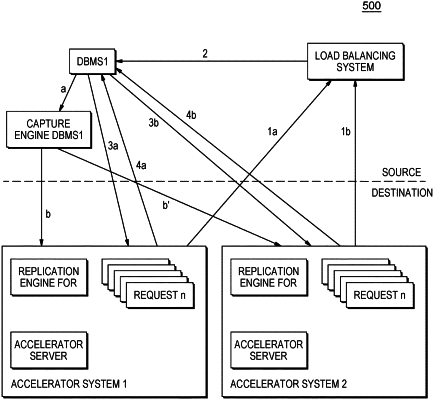| CPC G06F 16/254 (2019.01) [G06F 16/245 (2019.01); G06F 16/27 (2019.01)] | 1 Claim |

|
1. A computer-implemented method (CIM) for distributing query response workload in an online processing system including a plurality of accelerators, with each accelerator including a workload balance module and a plurality of online processing sub-systems and with each online processing subsystem respectively including a database management module, a replicated version of a database and a server configured to respond to queries, the CIM comprising:
for each online processing sub-system of the plurality of online processing systems, receiving a current performance characteristics data set including at least: (i) an update latency value indicative of a latency time associated with the given online processing sub-system occurring during intermittent database replication updates, and (ii) an update replication velocity value indicative of a speed at which the given online processing system receives data during intermittent database replication updates;
during each intermittent database replication update, replicating update information to each accelerator of the plurality of accelerators;
adjusting each workload balance module of each accelerator based on the update information;
subsequent to the adjusting of each workload balance module, receiving, by a first workload balance module of a first accelerator of the plurality of accelerators, a query requesting selected information from the database; and
selecting, by machine logic of the first workload balance module, a target online processing sub-system for responding to the query based on the current performance data sets of the plurality of online processing sub-systems, with the selection of the target online processing sub-system including consideration of at least the update latency values and the update replication velocity values.
|